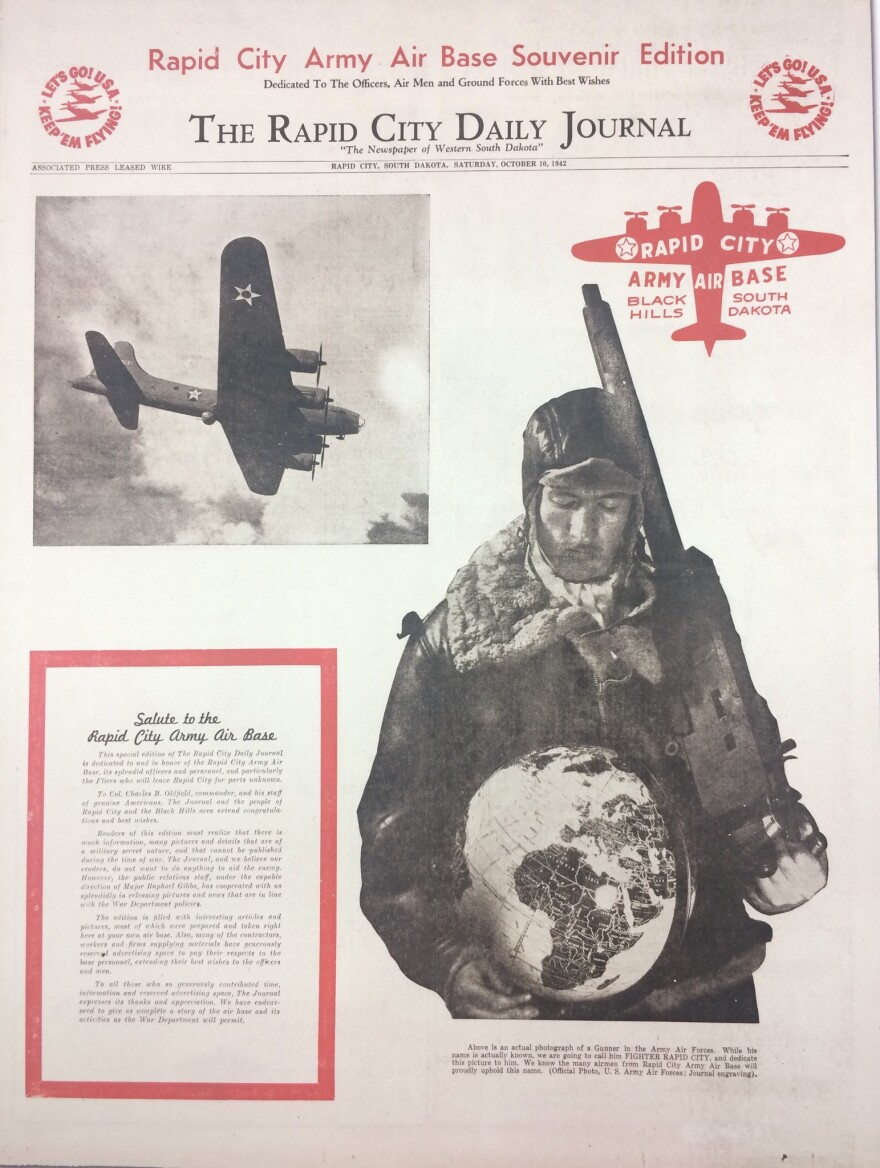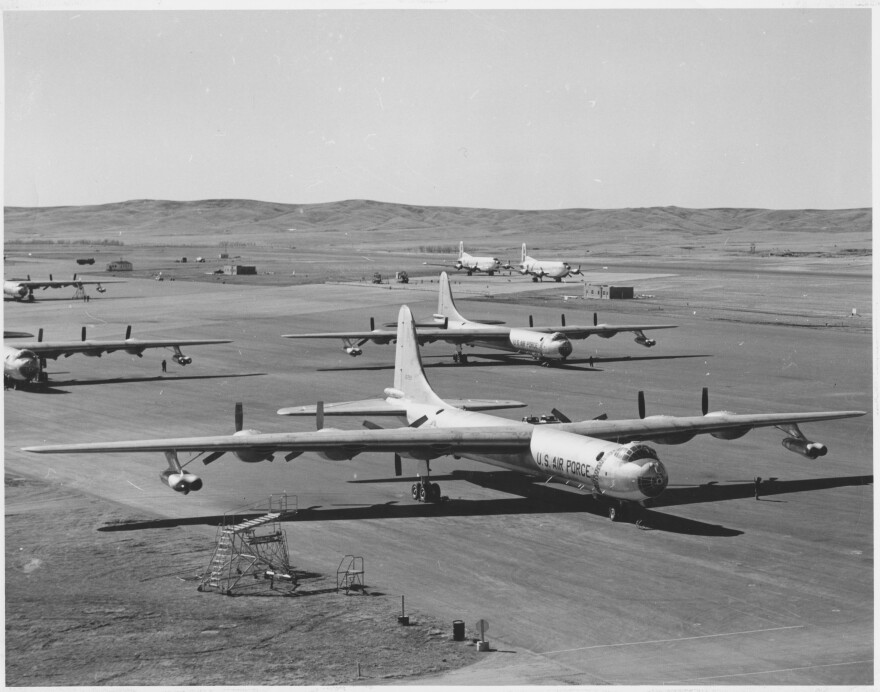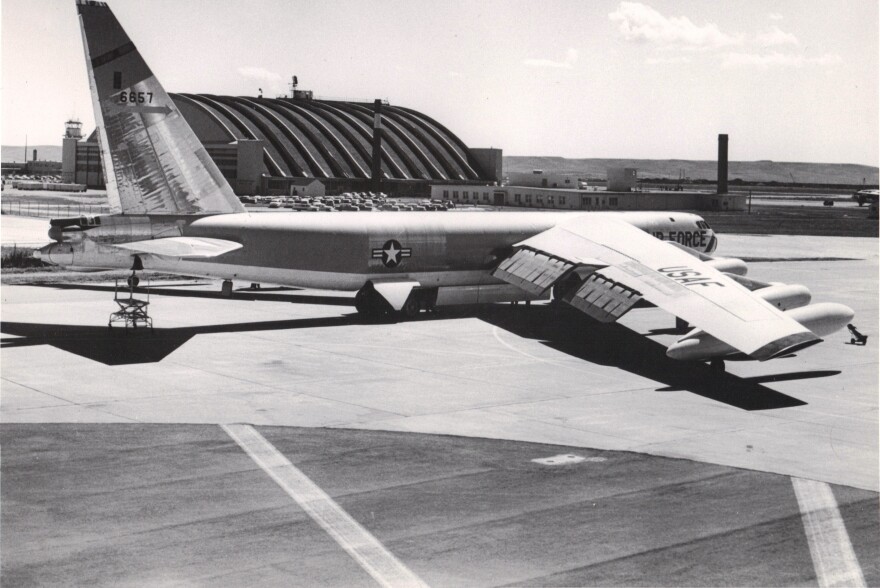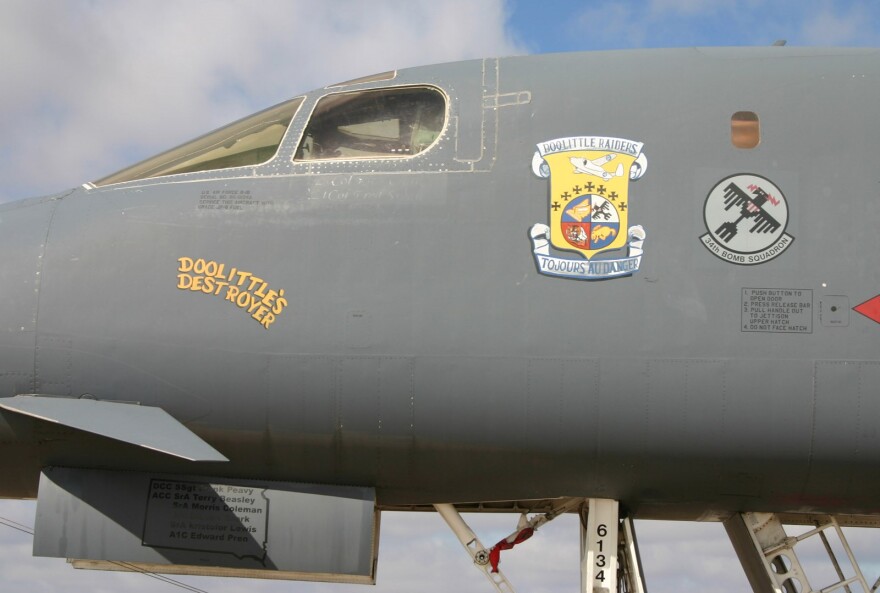The tragedy of Pearl Harbor on December 7th, 1941 pulled the United States into World War II. It also motivated the military branches to set up bases to protect our country – this is how what we now know as Ellsworth Air Force Base was formed.

Opened in 1942, Rapid City Army Air Field was created by the United States Army Air Force as a training base for the B-17 “Flying Fortress,” a bomber that housed a crew of ten men. These bombers were thrust into the war, with Rapid City Army Air Field sending squadrons of them to England to help.

One of the most well-known B-17’s was named the “All-American” and was utilized in Boeing ads to show how tough the planes truly were. The “All-American,” while flying over Tunis, North Africa, was crashed into by a German Messerchmitt ME-109 Fighter. The Messerschmitt exploded, but not before shearing the “All American” almost in half at the tail. Somehow, the “All-American” and its crew – including First Lieutenant Godfrey Engel – made it back to a friendly air field and landed safely without the plane breaking in two. Once they had come to a complete stop, though, the plane broke apart. There were no serious injuries, and 1Lt. Engel was stationed back at Rapid City Army Air Field to train other B-17 crews.
The United States Air Force was not formed until 1947, which is why the name of the South Dakota base changed so often. It began with the name Rapid City Army Air Field, and then the name changed to, in order: Rapid City Army Air Base, Rapid City Air Force Base, Weaver Air Force Base, and finally Ellsworth Air Force Base. No one has ever really heard of “Weaver Air Force Base” – it was named after Brigadier General Walter R. Weaver, and the Rapid City population bombarded the Secretary of the Air Force to change the name back. In all, the base was only named that for about six months.

It was named Ellsworth Air Force Base in 1953 after the death of Brigadier General Richard Ellsworth. General Ellsworth, who had command of the base, was part of a crew flying in a B-36 “Peacemaker” in Newfoundland when they crashed and the whole crew was killed. The crash remains in Newfoundland, with the tail very much intact.

President Dwight D. Eisenhower came out to the base and dedicated it in honor of General Ellsworth – and enjoyed some Black Hills fishing while he was here.

The base has always been a bomber base. It housed the B-17, the B-25 “Mitchell,” the B-29 “Superfortress,” the B-36 “Peacemaker,” the B-52 “Stratofortress,” and the B-1 “Lancer.”

These, of course, weren’t the only planes that could be found on base, but they were the ones that Ellsworth Air Force Base was best known for. Ellsworth also housed KC-135s used for refueling; the 54th Fighter Interceptor Squadron used to protect the United States in case of a nuclear attack during the Cold War; and the 4th Airborne Command Control Squadron, used to launch the missiles in case of the land control system not executing correctly.
There were two types of missiles at Ellsworth Air Force Base – the Titan I, and the Minuteman II. Both missiles were Inter-continental Ballistic Missiles (ICBMs) and were put in place as a defense during the Cold War. The Titan I ICBM was only used from 1962-1965 – it was quickly replaced because it was a liquid-fueled rocket, and so it took more time to get ready to launch. There were only nine Titan I’s in South Dakota, three each in Sturgis, Hermosa, and New Underwood. The newer, better missiles were considered to be the Minuteman II ICBM, which were put into use immediately after the Titan I was taken out of the ground. Minuteman II missiles were solid-fueled missiles, which means it only took them seconds to launch. There were 150 Minuteman II missiles in South Dakota, spread out between three squadrons: the 66th, 67th, and 68th. These were all controlled by Ellsworth Air Force Base, as part of the Strategic Air Command. Minuteman II missiles were kept until 1994, when they were shut down because of agreements made between Russia and the United States.

Today, Ellsworth Air Force Base is the home to B-1 “Lancers,” also known as “BONES.” This base is one of two in the nation to have B-1s on duty. The base is also home to three of the four squadrons that were part of the Doolittle Raid during WWII – the 34th, 37th, and 89th. Between these two amazing parts of Ellsworth Air Force Base, there continues to be an incredible service to our country.
Other Media

